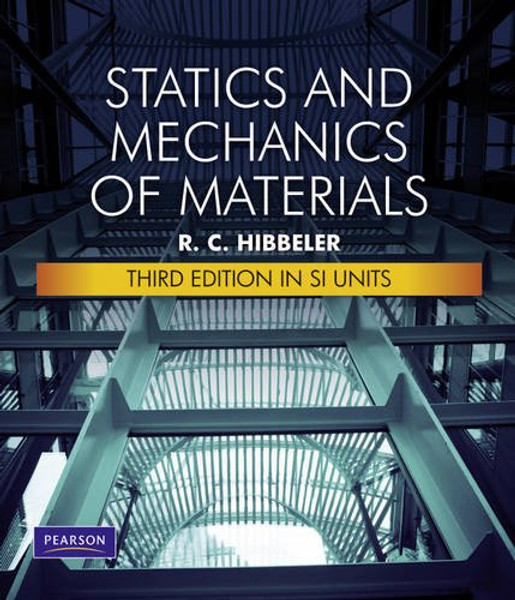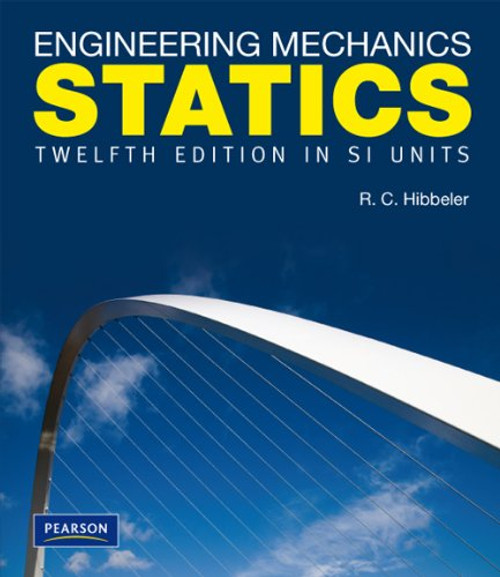Product Overview
This is a concise and well-illustrated introduction to the theory and application of statics and mechanics of materials used in many engineering disciplines. It boasts unique pedagogical features such as visualisation tools that help accelerate understanding and develop problem-solving skills in students. This four-coloured text in SI units is a combined abridged version of two of Hibbeler s best-selling titles, namely Engineering Mechanics Statics 12th edition in SI Units and Mechanics of Materials 8th edition in SI Units. The book s hallmark remains the same as the unabridged versions, that is having a strong emphasis on drawing a free-body diagram, as well as selecting an appropriate coordinate system and an associated sign convention when the equations of mechanics are applied. Many realistic analysis and design applications are presented, which involve mechanical elements and structural members often encountered in engineering practice.New To This Edition Content Revisions. Each section of the text has been carefully reviewed and in many areas, the material has been redeveloped to better explain concepts. Also, many new topics have been added. These include belt and screw friction, stress concentrations, torsion of noncircular shafts, using discontinuity functions to find beam deflections, and using the secant formula for eccentrically loaded columns. Artwork has been improved throughout the book to support these changes. New Photos. Forty-four new and updated photos placed throughout the book are used to explain how relevant engineering principles apply in real-world situations, how to make an idealised model for analysis, and how materials behave under load. Fundamental Problems. These problem sets can be considered as extended examples since they all have partial solutions and answers given at the back of the book. They are located just after each group of example problems. Fundamental Problems offer simple application of concepts taught, allowing students to develop their fundamental problem-solving skills before attempting to solve standard problems. In addition, they are useful for exam preparations, being an excellent review of engineering fundamentals. Conceptual Problems. These analysis and design problem types involve conceptual situations that allow students to think through and apply mechanical principles in real-life conceptual situations as depicted in photos. They provide a means to develop the skill of reducing any such problem from its physical description to a symbolic representation to which the principles may be applied. Such conceptual problems can be assigned when students have developed a certain level of expertise on the subject matter. They work well in both individual and team projects. New and More Homework Problems. Of the nearly 1,400 homework problems in the book, approximately 1,000 are new to this edition. They involve applications in many different fields of engineering. There are approximately 460 more problems found in this edition compared to the previous one, giving instructors a wider choice of problems to use for developing and testing their students problem-solving skills. Students also have more questions for practice. New Example Problems. New example problems have been added while others have been modified to provide greater emphasis on the applications of important concepts. Problems with Hints. Every problem marked with a bullet point ( ) comes with hints such as a suggestion, key equation, or additional numerical result that is given along with the answer at the back of the book. These hints encourage students to attempt such problems on their own by providing additional checks to the solution. Interactive Animations. Key principles that are difficult to visualise and understand now come with interactive animations. These animations help students visualise the forces at work in an engineering situation and see the relation between mathematical explanation and real structure. They break down complicated sequences into step-by-step movement of engineering parts and show how free-body diagrams can be derived. Being interactive, students can pause the animated sequence at multiple points to study and understand the underlying equations. It is an effective tool for instructors as it graphically explains difficult-to-understand concepts. Video Solutions: Developed by Professor Edward Berger from the University of Virginia, our video solutions offer step-by-step solution walkthroughs of representative homework problems in each chapter. They come with detailed voice-over explanations and allow self-paced instruction with 24/7 accessibility. Students learn how to break down a complex problem into multiple steps in order to find a solution, reducing their reliance on instructors. These video solutions have been conveniently classified into SI and non-SI clusters.






